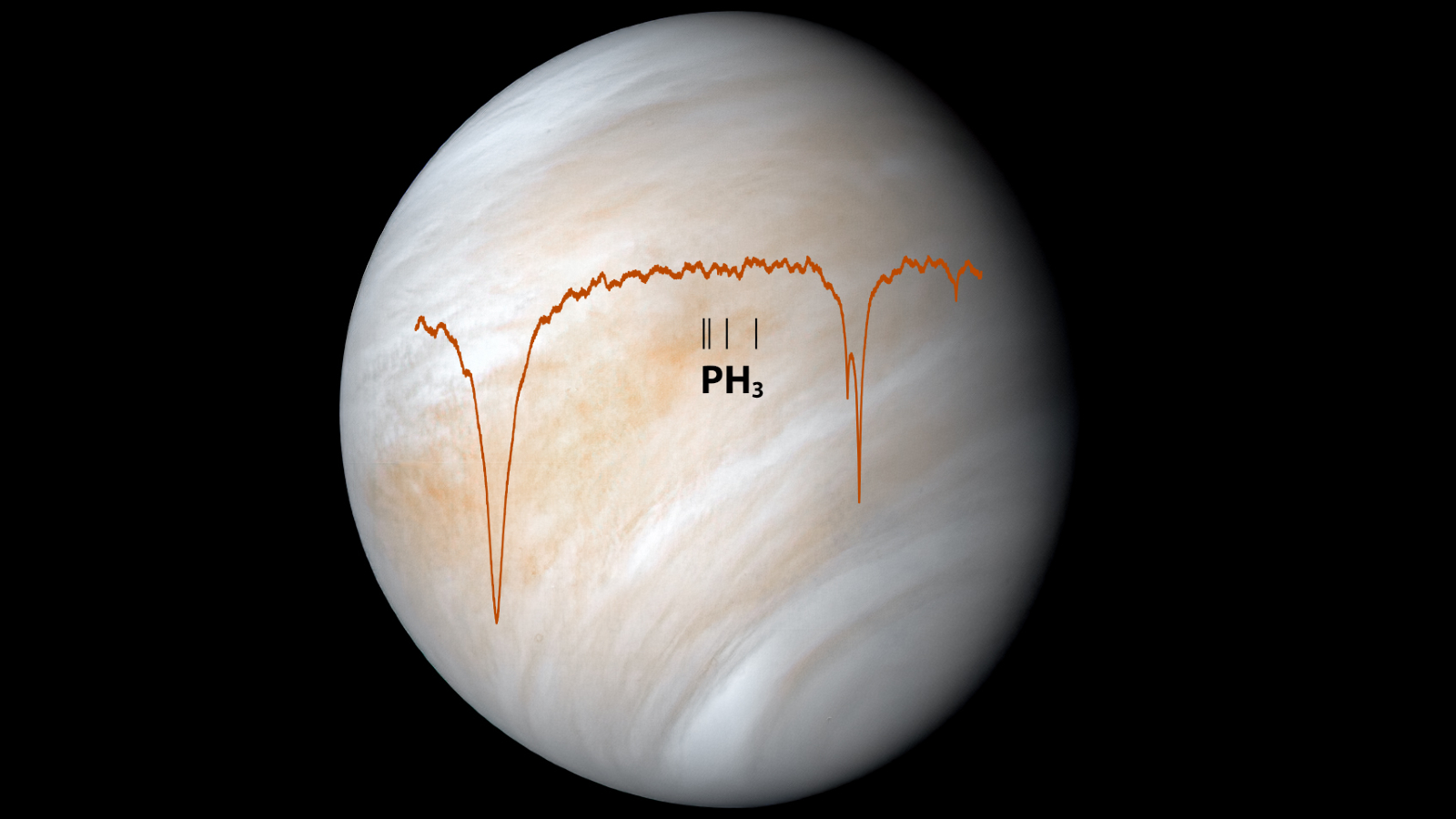Alien life on Venus? No chance, says new NASA study
New research has debunked a 2020 study that claimed to have found the chemical phosphine, a potential biomarker for extraterrestrial life, in Venus' atmosphere.
New research has debunked a controversial 2020 study that claimed to have found the chemical phosphine in Venus' hellish atmosphere. The chemical’s reported existence had hinted that there was alien life on the planet.
In 2020, a team of researchers announced that they had found phosphine in Venus' atmosphere using data collected by the Japanese space agency's Akatsuki spacecraft, which has been orbiting Venus since 2015. On Earth, phosphine is released into the atmosphere when organic matter decays. The alleged detection of the chemical in Venus' atmosphere sparked theories that extraterrestrial life could be present on our neighboring planet.
The detection was retrospectively corroborated by data that had been collected by NASA's Pioneer 13 probe during its visit to Venus in 1978. However, the astronomical community remained skeptical of the findings.
Now, in a new study published Oct. 21 in the journal Geophysical Research Letters, researchers used the Stratospheric Observatory for Infrared Astronomy (SOFIA) — a plane-mounted telescope co-run by NASA and the German space agency — to scan Venus' atmosphere. The researchers found that it was extremely unlikely that phosphine exists in Venus' atmosphere, and even if it did, the chemical could not be present in concentrations greater than 0.8 parts per billion, which is too low to have been created by extraterrestrial life.
Related: How long will it take to find proof of alien life?
SOFIA, which was recently retired, was a modified version of a Boeing 747SP widebody that carried an infrared telescope peering out of a large door in the plane's side. The modified airplane cruised through Earth's stratosphere — the second layer of the atmosphere, which spans between 7.5 and 31 miles (12 and 50 kilometers) above Earth's surface — enabling SOFIA to peek into the atmospheres of other planets in the solar system without major interference from chemicals in Earth's atmosphere.
It took several months for researchers to get a good glimpse of Venus' atmosphere, because SOFIA only gave the team limited opportunities to focus on the planet. To see into Venus' atmosphere, SOFIA had to be activated within 30 minutes before sunset to avoid glare from the sun, and Venus had to be precisely oriented with Earth.
Get the world’s most fascinating discoveries delivered straight to your inbox.
"You don't want sunlight accidentally coming in and shining on your sensitive telescope instruments," study lead author Martin Cordiner, an astrochemist at NASA's Goddard Space Flight Center in Maryland, said in a statement. "The Sun is the last thing you want in the sky when you're doing these kinds of sensitive observations."
The new study is not the first to come up empty handed while looking for phosphine in Venus' atmosphere. Several other studies have tried to repeat the results of the 2020 study, researchers said in the statement. But the new finding is one of the most definitive yet, thanks to the massive amounts of data collected by SOFIA, and puts a final nail in the coffin for the idea of extraterrestrial life on Venus.
If there are trace amounts of phosphine on Venus then they likely came from lightning strikes or volcanic activity, researchers said.
Venus has long been considered one of the most likely places to host extraterrestrial life within the solar system because of its similar size to Earth and location in the sun's habitable zone. But recent research suggests it may not be suitable for alien lifeforms.
In 2021, another study of Venus' atmosphere found that there is almost no water vapor in its clouds, meaning the planet's surface is likely too dry to support even drought-resilient microbes.
For now, at least, it seems that researchers searching for proof of alien life may be better off looking at other targets in the solar system, such as Saturn's moons Enceladus and Titan or Jupiter's moon Europa, according to the researchers.

Harry is a U.K.-based senior staff writer at Live Science. He studied marine biology at the University of Exeter before training to become a journalist. He covers a wide range of topics including space exploration, planetary science, space weather, climate change, animal behavior and paleontology. His recent work on the solar maximum won "best space submission" at the 2024 Aerospace Media Awards and was shortlisted in the "top scoop" category at the NCTJ Awards for Excellence in 2023. He also writes Live Science's weekly Earth from space series.




